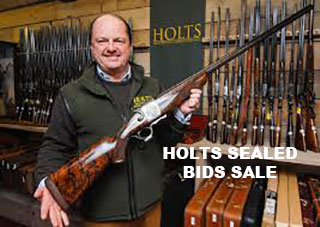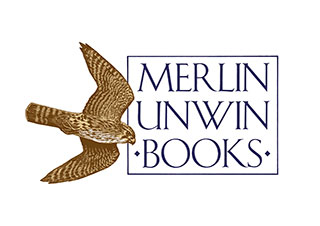Hammer Guns Appreciated in Literature and History
Lord Ripon favoured Purdey hammer guns.
‘Spaniels without ears’ was the well known phrase attributed to Lord Ripon on the subject of the latest ‘hammerless’ guns when they began appearing in solid numbers on the game shoots of late Victorian England. Ripon doggedly stuck to his back-action island-lock Purdey hammer guns, until dropping dead in the heather at the end of a grouse drive in 1923, still unconvinced by the new-fangled ‘improvements’ offered by the best gunmakers of the day. King George V shared his preference, as did Sir Harry Stonor, Lord Walsingham and a few other notables in the Prince of Wales’s shooting set.
Most sportsmen of the early twentieth century clamoured for the latest edge that technology could provide and the wealthiest and most discerning were, by then, well acquainted with the 1880 Purdey/Beesley self-opening side-lock ejector, which in my opinion, is the finest, most complete game gun ever built. The simpler Holland & Holland ‘Royal’ vied with the Purdey as a representation of all that was right with the British model of sporting shotgun. Whatever your preference, it is hard to argue with the assertion that by WW1 there was nothing worthwhile to do, other than make quality guns cheaper to produce in quantity.
With the deaths of the Victorian aristocratic shooting superstars and the decline in social prominence of driven shooting after the First World War, the hammer gun generally fell out of favour. Guns of fabulous quality and pedigree were handed to game keepers, then to gardeners, as the gentleman of the house upgraded to a smooth-profiled, side-lock ejector.
The beautiful quality of 1870s hammer guns is hard to beat.
W.W Greener, writing as early as 1888, comments on the situation then facing the average gun dealer with a shop full of used hammer guns: ‘…the (hammer gun) stock gets older and mustier, and as its value decreases his denunciation (of hammerless guns) becomes more fierce and worthless and this is how it comes that old diatribes are reiterated year after year, when the value of the invention itself (the hammerless gun) has long been proved beyond all question.’ Certain notable traditionalists may have failed to take up the hammerless models of inventive gunmakers like Greener, but the general trend towards hammerless guns was undeniable.
From the late 1800s, big Birmingham factories supplied the world with cheap, reliable Anson & Deeley action guns and London firms like Boss and Purdey delivered graceful, reliable and beautifully made side lock ejectors that were the turn-of the-century gun making equivalent of the Bentley motor car.
The twenties were all about being ‘modern’, the new swept out the old and the Victorian hammer gun looked out of place in polite company. After WW1 Robert Churchill was cutting a swath through tradition with his XXV concept of fast, short, snap-shooting hammerless guns, once again making the finest guns of the previous generation appear obsolete.
To the post-war shooting establishment, 30” damascus barrels and guns with external hammers were passé in the extreme. Their time had passed and they languished in gun rooms, cupboards, under beds and in the back of gun shops; unloved and unwanted. Many were butchered as clumsy attempts were made to ‘modernise’ them by cutting the barrels down and blacking the damascus. We should not be surprised by this today, as they were, at the time, seen as being valueless and perfectly acceptable as subjects for experimentation. Fashion is cyclical and when something drops out of fashion, it is generally reviled for a few years before being re-evaluated as a classic. Think of disco and flared trousers!
Made to be used – many enthusiasts insist nothing shoots like a best hammer gun.
The years between World War Two and the swinging sixties may have been wilderness years for hammer guns but voices of dissent could be heard if one listened (or read) carefully. Richard Arnold espoused the beauty and the performance of older guns in his ‘Shooter’s Handbook’ of 1955. Richard Akehurst reminded readers in 1969, in ‘Game Guns & Rifles’ of the exploits of the old guns and their sporting owners. A decade later, Crudgington & Baker brought their, truly impressive, cataloguing and dis-assembly endeavours to public attention in ‘The British Shotgun Vol.1’, which was the first in-depth attempt to classify and exemplify the plethora of gun patents taken out in Britain between 1850 and 1870.
During the 1980s, Geoffrey Boothroyd, columnist for ‘Shooting Times’, compiled his articles into three volumes, shedding yet more light on the legacy of the obsolete sporting shotguns left to the British public by their grandfathers and great-grandfathers.
Yet, still, hammer guns were mere curiosities to most. It took an American to show us all what should have been staring us in the face. Cyril Adams, a Texan gun dealer and formidable live pigeon shot, took the subject by the scruff of the neck and announced ‘God shoots with a Stephen Grant side-lever hammer gun’, in ‘Lock Stock & Barrel’(1996). Cyril started selling hammer guns to shooters, rather than collectors, because he knew they were better than anything else available, not because they were cheap, or quaint, or amusing.
A.J Stuart Wortley, using a hammer gun beats Dr Carver in the pigeon ring.
Like many a good gun salesman before him, Adams could sell guns because he could shoot them better than most. When people saw him winning competitions with British hammer guns, the queues started to form.
Cyril was not known for his tact: “What are you shooting that piece of crap for? Get yourself a proper English gun”, was apparently a typical sales pitch. He started a revolution in certain circles in the US and a rebirth of appreciation was well underway there before I tried to articulate my own enthusiasm for British classics in 2007 with ‘Vintage Guns for the Modern Shot’.
Published by Vintage Guns Ltd on (modified )




